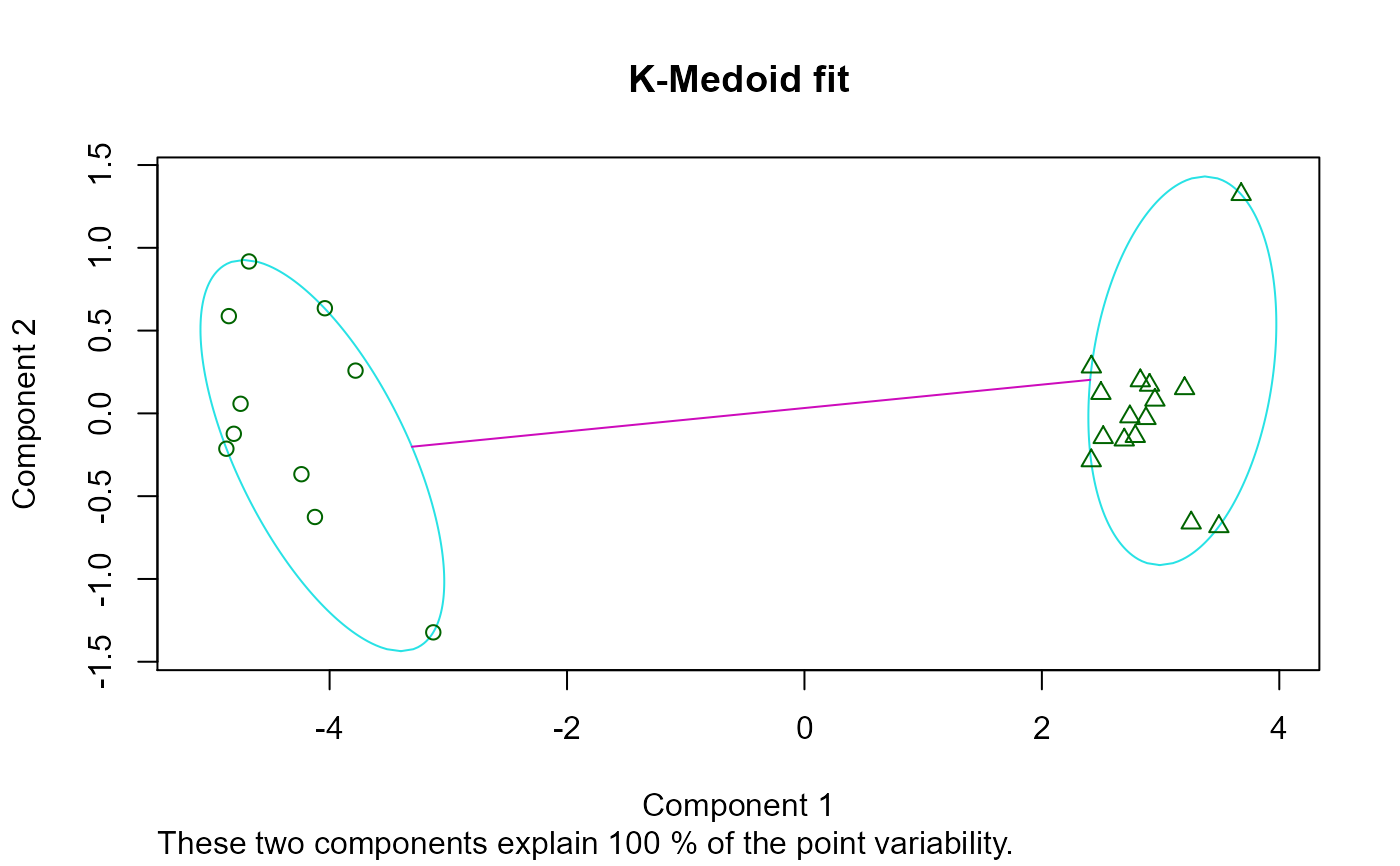Find optimal k of k-Medoid partitions using silhouette widths
optimal.k(x, nk = 10, plot = TRUE, cluster = TRUE, clara = FALSE, ...)
Arguments
| x | Numeric dataframe, matrix or vector |
|---|---|
| nk | Number of clusters to test (2:nk) |
| plot | Plot cluster silhouettes(TRUE/FALSE) |
| cluster | Create cluster object with optimal k |
| clara | Use clara model for large data |
| ... | Additional arguments passed to clara |
Value
Object of class clust "pam" or "clara"
References
Theodoridis, S. & K. Koutroumbas(2006) Pattern Recognition 3rd ed.
See also
pam for details on Partitioning Around Medoids (PAM)
clara for details on Clustering Large Applications (clara)
Author
Jeffrey S. Evans <jeffrey_evans<at>tnc.org>
Examples
#>#> #>#> #> #>x <- rbind(cbind(rnorm(10,0,0.5), rnorm(10,0,0.5)), cbind(rnorm(15,5,0.5), rnorm(15,5,0.5))) clust <- optimal.k(x, 20, plot=TRUE, cluster=TRUE)#># Extract multivariate and univariate mediods (class centers) clust$medoids#> [,1] [,2] #> [1,] -0.3863414 -0.4797485 #> [2,] 4.8249686 4.9026229#> [,1] #> [1,] 4.692233


